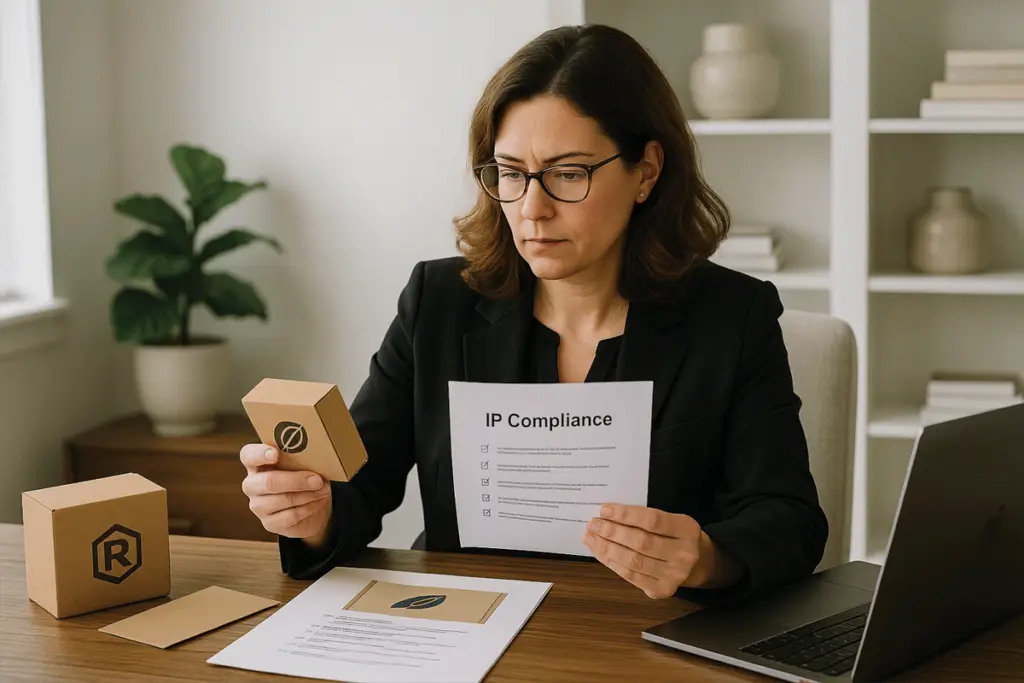How Amazon Sellers Can Prevent IP Complaints in 2025

Introduction
For Amazon sellers, a single intellectual property (IP) complaint can shut down a top-performing ASIN or even suspend an entire account. And while many sellers know how to appeal a complaint, fewer take proactive steps to avoid them in the first place.
In 2025, with Amazon tightening enforcement and brand owners increasing their use of IP monitoring tools, learning how to prevent Amazon IP complaints is just as important as knowing how to fight them. This blog walks you through updated strategies for staying compliant and reducing your risk.
What Triggers an IP Complaint on Amazon?
Amazon allows rights owners to report listings that allegedly violate their IP rights. These may involve:
Trademark misuse (e.g., using a brand name in the title without authorization)
Copyright infringement (e.g., using branded images or text)
Patent violations (e.g., selling a patented product or replica)
Unauthorized distribution (even if the product is authentic)
Even sellers offering genuine products can receive complaints if they lack proper documentation or violate listing content rules.
How to Prevent Amazon IP Complaints in 2025
1. Source from Authorized Suppliers Only
Avoid sourcing from liquidation sites, gray-market wholesalers, or vendors with unclear product origins.
Instead:
Work directly with the manufacturer or authorized distributors
Request and retain detailed invoices showing the supplier’s name, contact info, and itemized product data
Ask for documentation of the supplier’s relationship with the brand, when possible
If you’re reselling branded goods, the safest path is to obtain distribution rights in writing.
2. Review Your Listings for Trademark Violations
Using a brand name in your product title or bullets without permission is one of the fastest ways to trigger a complaint.
Avoid:
Including trademarked terms unless you’re explicitly authorized
Phrases like “compatible with [Brand]” unless accurate and allowed
Using competitor brand names in your backend keywords
Update your listings to focus on generic product descriptions unless you’re Brand Registered or approved to sell that brand.
3. Avoid Reusing Manufacturer Images or Content
Copying branded content — even if you’re selling the same item — can lead to copyright claims.
Instead:
Use original product photos
Write your own bullet points and descriptions
Avoid copy-pasting from other listings or manufacturer sites
This is especially important for private label sellers who resell factory-made products that may be sold by others.
4. Monitor Brand Ownership and Enforcement Activity
Before listing any branded product:
Check the brand’s Amazon presence
Use tools like IP Alert or Helium 10 to see if they are known for submitting complaints
Research whether the brand is in Amazon Brand Registry and actively enforcing its rights
If you notice a trend of suspensions related to a particular brand, reconsider listing it without authorization.
5. Get Your Own Brand Registered
If you’re a private label seller, enroll your brand in Amazon Brand Registry.
Benefits include:
Gaining control over your listings
Preventing others from editing your content
Tools for proactively reporting real infringement
Reducing the likelihood of competing brands reporting your listings
This also helps defend your own IP if someone hijacks your listing.
What to Do If You’re Still Hit With a Complaint
If you receive an IP complaint despite following all precautions:
Immediately check the complainant’s contact info in Seller Central
Reach out to them to request a retraction (if you’re confident your listing is compliant)
Submit a Plan of Action with supporting documentation
If your ASIN was removed or your account is at risk, contact AmazonSellersLawyer.com for tailored support
For brands needing long-term enforcement solutions, visit BrandEnforcementLaw.com for monitoring and takedown assistance.
Final Thoughts
The best way to win against an IP complaint is to never receive one in the first place. In 2025, brands are getting more aggressive, and Amazon is taking fewer chances with seller risk profiles.
If you sell branded products — or your own brand — take preventive action now. Review your listings, clean up your supplier pipeline, and stay off the radar of brand enforcement bots.
Need help defending a current complaint or getting your brand protected? Reach out to the team at AmazonSellersLawyer.com.
